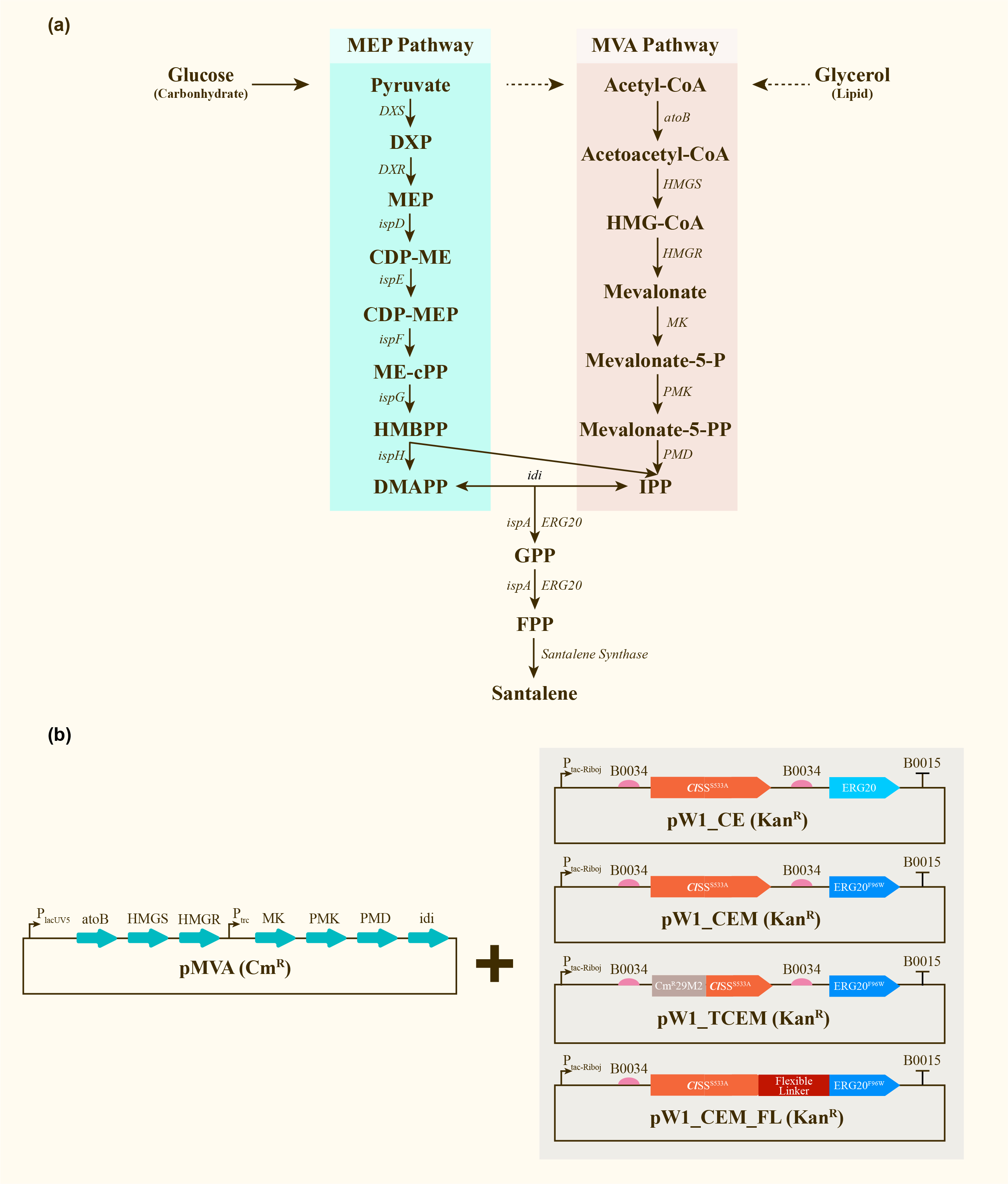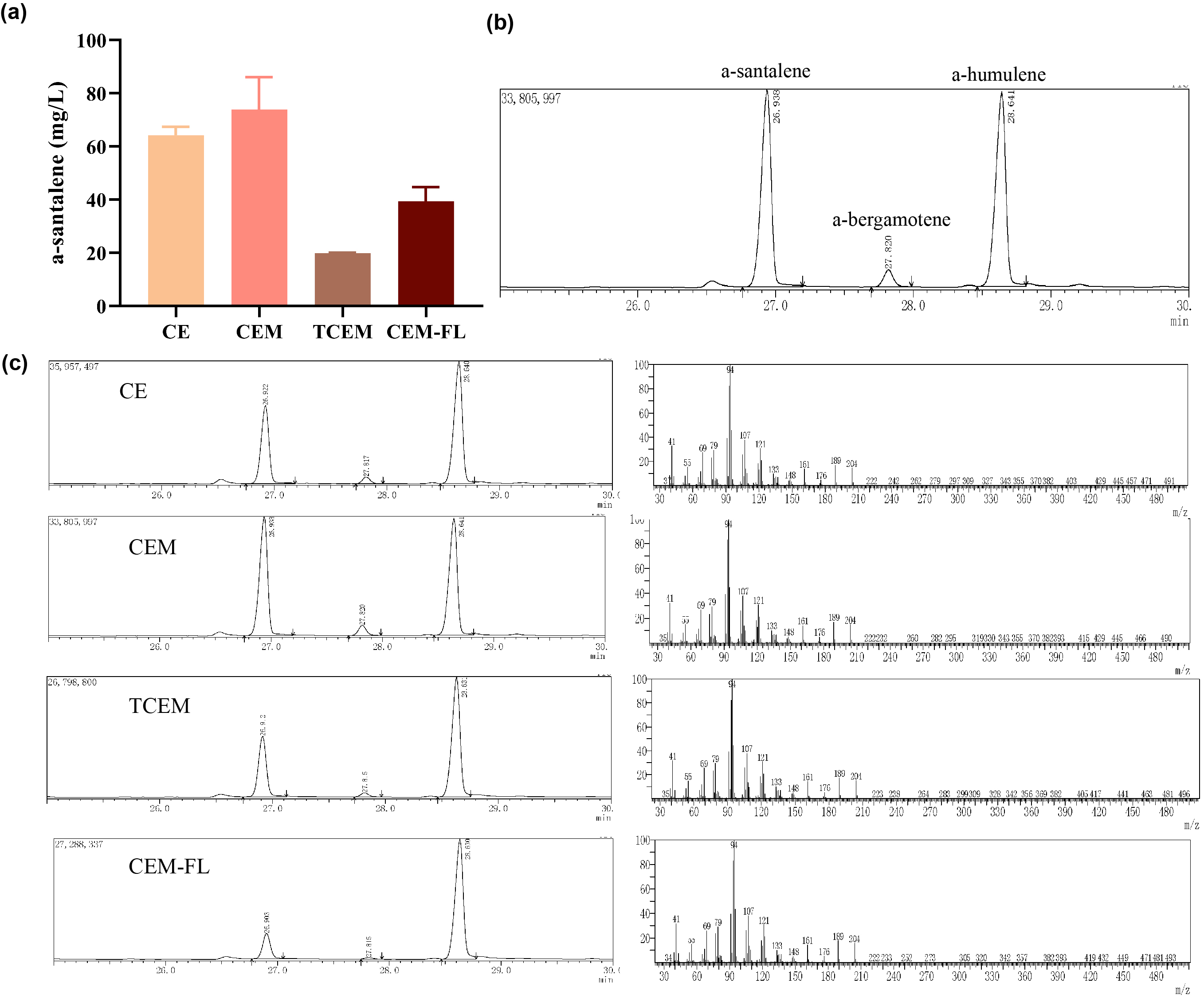Part:BBa_K4274003
ClSS_S533A-FL-ERG20_F96W
ClSS_S533A-FL-ERG20_F96W is a fusion protein used to catalyze the conversion of geranyl diphosphate (GPP) and farnesyl diphosphate (FPP) from their building blocks, IPP and DMAPP, to α-santalene.
It's composed of two main domains: ClSS_S533A from Clausena lansium and ERG20_F96W from S. cerevisiae. The two domains are linked with a flexible linker. It includes a part collection which enables us to produce santalene in E. coli.
Usage and biology
ClSS is a biobrick part encoding the gene for alpha-santalene synthase from Clausena lansium (GenBank: ADR71055.1). The enzyme catalyzes the conversion of the common isoprenoid intermediate farnesyl pyrophosphate (FPP) into the alpha-santelene in a single step. Erg20 (Part Number: BBa_K849001), a bifunctional enzyme, catalyzes the sequential formation of geranyl diphosphate (GPP) and farnesyl diphosphate (FPP). The residues F96 of Erg20 is essential for FPP synthesis due to the fact that they assist the production of monoterpene which eventually gives rise to FPP (Ignea et al., 2014).
In our design, this part is introduced into E. coli as part of the heterologous mevalonate pathway for santalene production. After engineering, E. coli could utilize both MEP pathway and MVA pathway for the universal precursors isopentenyl diphosphate (IPP) and dimethylallyl diphosphate (DMAPP), then synthesize santalene with the help of FPP Synthase (FPPS) and santalene synthase (SS). Except heterologously expressed MVA pathway and ERG20 of Saccharomyces cerevisiae and santalene synthase of Clausena lansium (ClSS), several modifications upon ERG20 or ClSS by amino acid mutation, binding to a hydrophillic tag and the construction of fusion protein were tested for the higher yield of santalene. Therefore, with the help of the co-transformation of pMVA plasmid with various pW1 plasmids, including pW1_CE, pW1_CEM, pW1_TCEM and pW1_CEM_FL, different strains like CE, CEM, TCEM, CEM_FL were successfully constructed (Figure 1). The complete pathway we designed for producing santalene in E. coli is illustrated in Figure 1.

Characterization
The various engineering of E.coli DH5α ∆TnaA mentioned above were used for santalene production. After rapid centrifugation, the supernatant of dodecane was spiked with with 0.475 g/L a-humulene as an internal standard, and then injected into GC/MS for verification of α-santalene production. It turned out that all samples from four strains appeared a significant peak at the retention time of 26-27 min, and various peak area of different samples exhibited santalene production with differing levels, indicating the general success of E. coli engineering. It can be concluded that the E. coli strain CEM (with pW1_CEM plasmid) produces the maximal level of α-santalene compared to other strains (73.93 mg/L). Furthermore, our study elucidates that the mutation of 96th amino acid into tryptophan could increase the yield of α-santalene by about 20%, substantiating the prominent performance of ERG20F96W in enhancing the supply of FPP and α-santalene production in E. coli (Figure 2).

Source
Clausena lansium; S. cerevisiae
Sequence and features
- 10COMPATIBLE WITH RFC[10]
- 12COMPATIBLE WITH RFC[12]
- 21INCOMPATIBLE WITH RFC[21]Illegal BglII site found at 2585
Illegal BglII site found at 2646 - 23COMPATIBLE WITH RFC[23]
- 25INCOMPATIBLE WITH RFC[25]Illegal NgoMIV site found at 183
Illegal AgeI site found at 2301 - 1000COMPATIBLE WITH RFC[1000]
Reference
[1] Ignea C., Pontini M., Maffei M. E., et al. Engineering monoterpene production in yeast using a synthetic dominant negative geranyl diphosphate synthase. ACS Synthetic Biology, 3(5), 298-306 (2014). https://doi.org/10.1021/sb400115e
| None |
